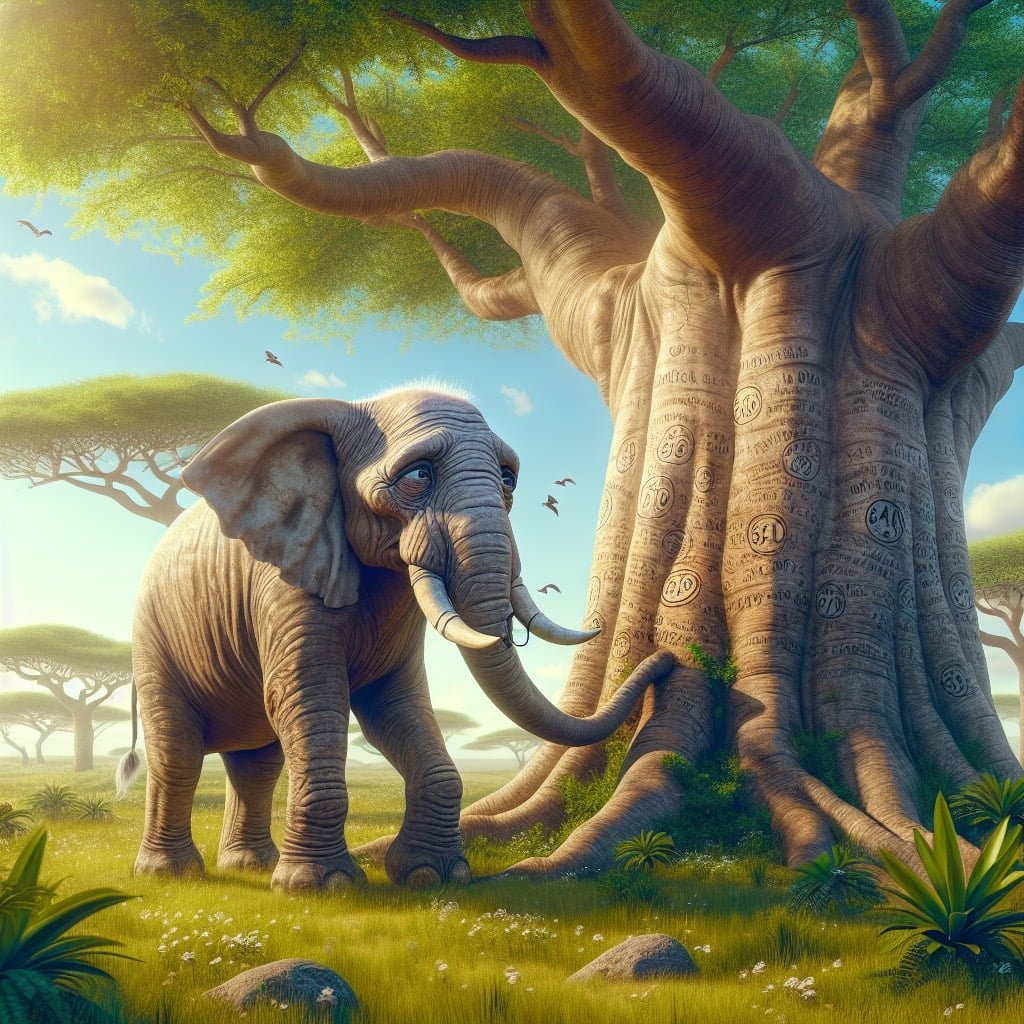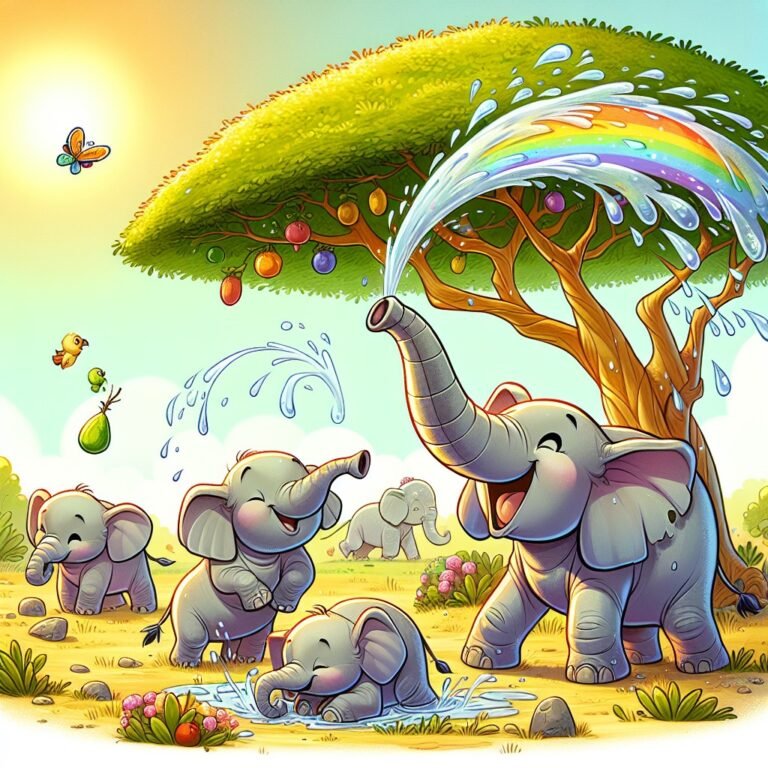Welcome to a world of wonder and discovery as we delve into the fascinating realm of Elephant Facts For Kids. These gentle giants captivate our hearts with their impressive memories, unique behaviors, and incredible abilities. From their exceptional memory capacity to their graceful swimming skills, Elephants are truly captivating creatures that continue to amaze us. Join me on a journey through the world of Elephants and uncover the fun facts that make them such incredible beings. Get ready to be inspired and awed by the captivating world of Elephants!
Elephant Facts For Kids
1. Elephants Have the Best Memory

For younger kids: Elephants never forget anything they learn.
For older kids: Elephants have an incredible memory that allows them to remember and recognize other animals, places, and even humans for many years.
Detailed explanation:Elephants are known for having an incredible memory, which is why they are often said to have the best memory in the animal kingdom. This ability to remember specific locations, individuals, and events is crucial for their survival in the wild.
One fascinating aspect of Elephant Facts For Kids memory is their ability to recognize and remember other elephants, even after years of separation. This is important for maintaining social bonds within the herd, as elephants rely on each other for survival and protection.
In addition to recognizing other elephants, these intelligent animals are also able to remember specific paths and watering holes, even in vast and complex landscapes. This is essential for finding food and water, especially during times of drought or scarcity.
Furthermore, elephants have been observed displaying signs of grief and mourning when a member of their herd passes away. This emotional intelligence and ability to remember lost companions highlights the depth of their memory and their strong social bonds.
Overall, the incredible memory of elephants plays a crucial role in their daily lives, helping them navigate their environment, maintain social connections, and survive in the wild. This remarkable ability is just one of the many reasons why elephants are truly fascinating creatures.
Elephant Facts For Kids
2. Elephants Are Great Swimmers

For younger kids: Elephants love to splash and play in the water.
For older kids: Despite their large size, Elephants are excellent swimmers and can use their trunks as snorkels to breathe while they swim long distances.
Detailed explanation:Elephants are truly fascinating creatures, with a wide range of incredible abilities. One lesser-known fact about elephants is that they are great swimmers. Despite their large size and heavy weight, elephants are surprisingly agile in the water. Their massive bodies are actually well-suited for swimming, as their buoyant lungs help keep them afloat.
Elephants use their trunk as a snorkel while swimming, allowing them to breathe easily while their bodies are submerged in water. This adaptation allows them to swim long distances across rivers and lakes in search of food, mates, or simply to cool off on a hot day. Elephants are also known to use swimming as a form of play, frolicking in the water and even using their trunks to spray water at each other in a form of play.
In the wild, elephants will often swim to reach new feeding grounds or escape predators. In regions where their habitat is threatened, elephants may need to swim across rivers to find food and shelter. However, despite their swimming abilities, elephants are unfortunately facing a number of threats in the wild, including habitat loss, poaching, and human-wildlife conflict.
In conclusion, elephants are not only impressive on land, but also in the water. Their swimming abilities showcase their adaptability and intelligence, making them truly remarkable animals. Educating kids about these amazing Elephant Facts For Kids can foster a greater appreciation and understanding of these majestic creatures and the importance of conservation efforts to protect them.
Elephant Facts For Kids
3. An Elephant’s Trunk Has Thousands of Muscles

For younger kids: An Elephant’s trunk is like a super-strong arm and nose combined.
For older kids: An Elephant’s trunk contains around 150,000 muscles, making it incredibly strong, flexible, and versatile for various tasks like grasping objects and even picking up small items like a coin.
Detailed explanation:Elephant Facts For Kids
One of the most fascinating features of an elephant is its trunk, which is a truly remarkable appendage. Contrary to what many people may think, an elephant’s trunk is not just a long nose – it is actually a highly dexterous and versatile tool that is capable of incredible feats. In fact, an elephant’s trunk contains an astonishing 40,000 muscles, making it one of the most complex and specialized muscle structures in the animal kingdom.
The trunk of an elephant is essentially a fusion of the nose and upper lip, and it is used for a wide range of functions. With its incredible strength and flexibility, an elephant can use its trunk to grasp and manipulate objects with great precision. Elephants use their trunks to pick up food and water, to communicate with each other through touch and scent, and even to perform delicate tasks such as painting or playing musical instruments. The muscular control of an elephant’s trunk is so precise that it can even be used to pick up a single blade of grass.
The sheer number of muscles in an elephant’s trunk allows for such a wide range of movements and functions. These muscles are arranged in complex layers and bundles, allowing the trunk to be both strong and flexible. This incredible muscular structure is what gives an elephant its unparalleled abilities and makes its trunk one of the most unique and versatile appendages in the animal kingdom. So, the next time you see an elephant using its trunk in a seemingly magical way, remember that it is all thanks to the thousands of muscles that make up this extraordinary organ.
Elephant Facts For Kids
4. Elephants Have Special Feet

For younger kids: Elephants have big, cushioned feet that help them walk quietly.
For older kids: Elephants have unique, specialized feet with a cushion of fatty tissue and fibrous tissue that allow them to move silently and support their massive weight while walking long distances.
Detailed explanation:Elephants have special feet that are uniquely adapted to support their massive bodies and enable them to traverse a variety of terrains. One interesting fact about elephant feet is that they have a large fat pad on the underside of the foot that acts as a cushion, providing shock absorption and distributing the weight of the animal evenly. This fat pad helps to support the elephant’s weight and reduce the impact on their joints as they walk, run, or stand for long periods of time.
Another fascinating feature of elephant feet is their ability to essentially “tip-toe” by walking on their tiptoes, with their heels elevated off the ground. This unique walking style allows elephants to move silently and gracefully through their environment, making them excellent stealthy animals despite their massive size. Additionally, elephants can spread their toes wide apart, increasing the surface area of their feet and providing better traction on various surfaces such as mud, sand, or grass.
Elephant feet are also equipped with tough, thick skin to protect them from rough terrain and sharp objects. This thick skin acts as a natural barrier against injuries and infections, allowing elephants to travel long distances without damaging their feet. Overall, the specialized design of elephant feet reflects the incredible adaptability and resilience of these magnificent creatures, making them well-suited for their natural habitat and lifestyle.
In conclusion, these Elephant Facts For Kids highlight just how remarkable and unique elephant feet are, showcasing the fascinating adaptations that enable these animals to thrive in their diverse environments.
Elephant Facts For Kids
5. Elephants Can Communicate Using Infrasound

For younger kids: Elephants can talk to each other in a way that we can’t hear.
For older kids: Elephants can produce low-frequency sounds called infrasound that travel great distances, allowing them to communicate with other Elephants that may be kilometers away.
Detailed explanation:Elephants are truly fascinating creatures, possessing a wide range of impressive abilities and skills. One of the most intriguing Elephant Facts For Kids is the fact that they have the ability to communicate using infrasound. Infrasound refers to sound waves that are below the frequencies that can be heard by the human ear, typically below 20 Hz. Elephants are capable of producing these low-frequency infrasounds through their larynx, and they use them to communicate over long distances with other elephants.
This unique form of communication allows elephants to stay in touch with one another even when they are miles apart. It is especially useful in the dense forests and open savannas where elephants typically live, as it can travel much farther than higher frequency sounds. Infrasound is able to pass through obstacles such as trees and bushes, making it an ideal form of long-distance communication for these large animals.
Elephants use infrasound to convey a variety of messages to one another, including warnings of danger, calls for assistance, and even mating calls. This form of communication is crucial for maintaining social bonds within elephant herds, as it allows individuals to stay connected and coordinated even when they are far apart. It also helps elephants to navigate their vast home ranges and coordinate group movements, contributing to their overall survival and success in the wild.
In conclusion, the ability of elephants to communicate using infrasound is a fascinating example of the incredible adaptations and behaviors of these majestic animals. By employing this unique form of communication, elephants are able to stay connected, share information, and maintain their social structures in their complex and challenging environments.
Elephant Facts For Kids
6. Elephants Have a Unique Way of Cooling Down

For younger kids: Elephants love to take baths and play in the mud to stay cool.
For older kids: Elephants don’t sweat like humans; instead, they cool down by flapping their large ears or covering themselves in mud, which helps regulate their body temperature.
Detailed explanation:Elephants, known for their large size and gentle nature, have a unique way of cooling down that sets them apart from other animals. These magnificent creatures have a special adaptation that allows them to regulate their body temperature in hot climates.
One of the most fascinating **Elephant Facts For Kids** is that elephants do not have sweat glands like humans do. Instead, they rely on other methods to cool themselves down. One way elephants cool themselves is by flapping their large ears. Elephants have a network of blood vessels in their ears that expand when they flap them, allowing heat to escape and be carried away by the wind. This process helps to lower their body temperature and keep them cool in hot environments.
Another interesting adaptation that helps elephants stay cool is their habit of taking mud baths. Elephants will often cover themselves in mud, which acts as a natural sunscreen and helps to keep their body temperature regulated. The mud also provides a protective barrier against insects and parasites, making it a dual-purpose cooling method for these majestic animals.
In addition to ear flapping and mud baths, elephants also have a unique feature called a “cooling system,” located in their trunks. Elephants can suck up water into their trunks and then spray it onto their bodies, providing an instant cooling effect. This behavior is not only practical for cooling down but also serves as a form of social interaction among elephant herds.
Overall, the **Elephant Facts For Kids** provide insight into the fascinating adaptations that these gentle giants have developed to stay cool in their natural habitats. From ear flapping to mud baths to trunk-spraying, elephants have a truly unique way of staying cool in hot climates.
Elephant Facts For Kids
7. The African Elephant is the Largest Land Animal

For younger kids: African Elephants are the biggest animals on land—they’re like huge, friendly dinosaurs!
For older kids: The African Elephant holds the title of the largest land animal, with males reaching up to 13 feet tall at the shoulder and weighing as much as 14,000 pounds.
Detailed explanation:The African Elephant holds the impressive title of being the largest land animal on Earth. These magnificent creatures can weigh up to a staggering 14,000 pounds and stand as tall as 13 feet at the shoulder. There are two subspecies of African Elephants: the African Forest Elephant and the African Savannah Elephant. The African Savannah Elephant is the larger of the two, with larger ears that are shaped like the continent of Africa.
One fascinating aspect of Elephant Facts For Kids is that despite their massive size, African Elephants are herbivores, meaning they only eat plants. These gentle giants spend most of their day foraging for food, consuming around 300 pounds of vegetation each day. Their diet consists of grasses, fruits, leaves, and bark. They use their incredible tusks to dig for roots, strip bark from trees, and defend themselves against predators.
Another interesting Elephant Facts For Kids is their incredible intelligence. African Elephants are known for their high levels of social interaction, communication, and problem-solving abilities. They form close-knit family groups led by a matriarch, who is usually the oldest and most experienced female in the herd. These family groups can consist of up to 40 individuals and are essential for the survival and well-being of the elephants.
Unfortunately, African Elephants are facing numerous threats, including habitat loss, poaching for their ivory tusks, and human-wildlife conflict. Conservation efforts are being made to protect these iconic animals and ensure their survival for future generations to admire and learn about Elephant Facts For Kids.
Elephant Facts For Kids
8. Elephants Have a Gestation Period of Nearly 2 Years

For younger kids: It takes a really long time for baby Elephants to grow inside their moms.
For older kids: Elephant pregnancies are the longest of any land animal, lasting up to 22 months before the birth of a single calf, making it one of the most significant events in an Elephant’s life.
Detailed explanation:Elephants are truly remarkable creatures, especially when it comes to reproduction. One of the most fascinating Elephant Facts For Kids is that these gentle giants have an incredibly long gestation period of nearly 2 years. This is the longest gestation period of any mammal on land, lasting a whopping 22 months on average.
The reason behind this lengthy gestation period can be attributed to the incredible amount of development that takes place during an elephant pregnancy. Elephants have a slow reproductive rate, with females typically giving birth to only one calf at a time. This means that each pregnancy is crucial for the survival of the species, and therefore, the fetus spends an extended period of time developing in the womb to ensure its health and viability.
During this 22-month gestation period, the fetus undergoes rapid growth and development. Elephant calves are born weighing around 200 pounds, which is quite large compared to other mammals. This long gestation period allows for the calf to fully develop its trunk, which is essential for survival in the wild.
Another reason for the long gestation period is the fact that elephants have a complex social structure and require time to raise their young properly. Elephant calves rely heavily on their mothers for nourishment, protection, and education. The extended gestation period allows for the calf to develop physically and emotionally, ensuring its best chances of survival in the wild.
In conclusion, the nearly 2-year gestation period of elephants is a unique and fascinating aspect of their reproductive biology. It is a testament to the intricate and delicate balance of nature, where each species has evolved specific adaptations to ensure the survival of their offspring.
Elephant Facts For Kids
9. Elephants Show Signs of Mourning

For younger kids: Elephants cry and comfort each other when someone they love passes away.
For older kids: Elephants display complex emotions and have been observed showing signs of mourning, such as gently touching and caressing the bones of deceased Elephants, demonstrating a deep understanding of loss and grief.
Detailed explanation:Elephants are known for their strong social bonds and intricate communication skills, making them one of the most intelligent and empathetic animals on the planet. One of the most striking examples of their emotional depth is their ability to show signs of mourning. When a member of an elephant herd passes away, the other elephants will gather around the body and exhibit behaviors that are remarkably similar to human mourning rituals.
For example, elephants have been observed gently touching the deceased elephant with their trunks, caressing their body, and even trying to cover them with leaves and branches. These actions show a level of emotional understanding and compassion that is truly remarkable in the animal kingdom. In some cases, elephants have been seen staying with the body of a deceased herd member for days, refusing to leave their side despite the risk of predators or other dangers.
Studies have shown that elephants are capable of forming deep emotional bonds with one another, much like humans do with their family members and friends. These bonds are crucial for their survival in the wild, as they rely on each other for protection, food, and social interaction. The ability of elephants to mourn the loss of a member of their herd further emphasizes the complex social structures and emotional lives of these magnificent creatures.
In conclusion, the fact that elephants show signs of mourning highlights their intelligence, empathy, and social complexity. By understanding and appreciating these Elephant Facts For Kids, we can gain a deeper insight into the rich emotional lives of these incredible animals.
Elephant Facts For Kids
10. Elephants Have an Incredible Lifespan

For younger kids: Elephants can live for a really, really long time—way longer than most other animals!
For older kids: Wild Elephants can live up to 60-70 years, while those in captivity can even reach their 80s, making them one of the longest-lived mammals on the planet.
Detailed explanation:Elephants are truly remarkable creatures, known for their large size, intelligence, and social behavior. One of the most fascinating Elephant Facts For Kids is their incredible lifespan. In the wild, elephants can live up to 70 years or even longer in some cases. This longevity is due in part to their large size, which protects them from many predators, as well as their slow rate of reproduction.
Female elephants typically give birth to a single calf after a gestation period of nearly two years, and they invest a great deal of time and energy in raising and protecting their young. This means that elephants have relatively low mortality rates compared to many other species, allowing them to live for several decades.
In addition to their physical adaptations, elephants also exhibit complex social behaviors that may contribute to their longevity. They live in tight-knit family groups led by a matriarch, who has years of experience and knowledge that she passes down to her descendants. This intergenerational transfer of information helps young elephants learn how to find food, navigate their environment, and interact with other members of their group.
Overall, the incredible lifespan of elephants is a testament to their adaptability, intelligence, and social nature. By understanding more about these fascinating creatures, we can better appreciate the importance of conserving their habitats and protecting them from threats such as poaching and habitat loss.
Did You Know?
Elephants are highly intelligent and social animals, forming tight-knit family groups that exhibit empathy, cooperation, and even problem-solving skills.
Summary of Elephant Facts For Kids
Discovering fun and fascinating facts about elephants is not only entertaining, but also educational for kids of all ages. From their massive size to their intricate social structures, elephants are truly remarkable creatures that captivate the imagination. By delving deeper into the world of elephants, children can learn about the importance of empathy, communication, and problem-solving skills in the animal kingdom. Understanding these unique characteristics can help instill a sense of respect and appreciation for wildlife and the environment. So, whether you’re a young animal lover or simply curious about the natural world, exploring elephant facts is a journey that will both inspire and educate. Join us as we uncover the wonders of these incredible beings and discover all the reasons why elephants are worth learning more about.
Sources and additional information for Elephant Facts For Kids
WikipediaBritannicaSan Diego Zoo KidsThe Smithsonian InstitutionDK Find Out!Australian MuseumWorld Wildlife FundThe Nature ConservancyAnimal PlanetMonterey Bay AquariumPBS NatureSmithsonian’s National Zoo & Conservation Biology InstituteWorld Wildlife FundAnimal Diversity Web (University of Michigan)IUCN Red List of Threatened SpeciesThe Cornell Lab of Ornithology – All About BirdsNational Audubon SocietyEncyclopedia of LifeSeaWorld Parks & EntertainmentAustralian Museum – AnimalsEncyclopedia of Life




